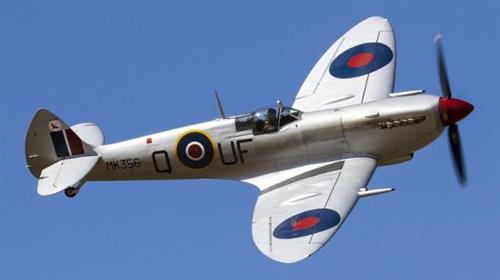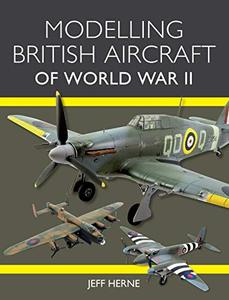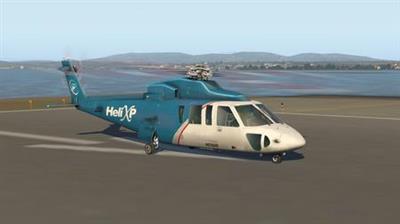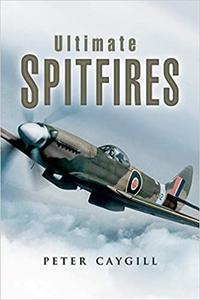Udemy - Flying the Spitfire MK9
"softddl.org"
4-12-2021, 05:05
-
Share on social networks:
-
Download for free: Udemy -
-

MP4 | Video: h264, 1280x720 | Audio: AAC, 44.1 KHz, 2 Ch
Genre: eLearning | Language: English | Duration: 11 lectures (1 hour, 58 mins) | Size: 2.54 GB
Flying Classic aircraft from WW2

MP4 | Video: h264, 1280x720 | Audio: AAC, 44.1 KHz, 2 Ch
Genre: eLearning | Language: English | Duration: 11 lectures (1 hour, 58 mins) | Size: 2.54 GB
Flying Classic aircraft from WW2
What you'll learn
Learning to fly and handle high performance tail wheel aircraft.
Learning the inherent design fault in tail wheel aircraft.
Learning why things will go wrong on the ground.
Learning how not to let things go wrong on the ground.
Requirements
Spitfires are available to download online some are free.
Description
Spitfire, also called Supermarine Spitfire, the most widely produced and strategically important British single-seat fighter of World War II. The Spitfire, renowned for winning victory laurels in the Battle of Britain (1940-41) along with the Hawker Hurricane, served in every theatre of the war and was produced in more variants than any other British aircraft.
The Spitfire was designed by Reginald Mitchell of Supermarine Ltd., in response to a 1934 Air Ministry specification calling for a high-performance fighter with an armament of eight wing- mounted 0.303-inch (7.7-mm) machine guns. The airplane was a direct descendant of a series of floatplanes designed by Mitchell to compete for the coveted Schneider Trophy in the 1920s. One of these racers, the S.6, set a world speed record of 357 miles (574 km) per hour in 1929. Designed around a 1,000-horsepower, 12-cylinder, liquid-cooled Rolls-Royce PV-12 engine (later dubbed the Merlin), the Spitfire first flew in March 1935. It had superb performance and flight characteristics, and deliveries to operational Royal Air Force (RAF) squadrons commenced in the summer of 1938. A more radical design than the Hurricane, the Spitfire had a stressed-skin aluminum structure and a graceful elliptical wing with a thin airfoil that, in combination with the Merlin's efficient two-stage supercharger, gave it exceptional performance at high altitudes.
The version of the Spitfire that fought in the Battle of Britain was powered by a Merlin engine of 1,030 horsepower. The plane had a wingspan of 36 feet 10 inches (11.2 metres), was 29 feet 11 inches (9.1 metres) long, and reached a maximum speed of 360 miles (580 km) per hour and a ceiling of 34,000 feet (10,400 metres). Faster than its formidable German opponent the Bf 109 at altitudes above 15,000 feet (4,600 metres) and just as maneuverable, Spitfires were sent by preference to engage German fighters while the slower Hurricanes went for the bombers. More Hurricanes than Spitfires served in the Battle of Britain, and they were credited with more "kills," but it can be argued that the Spitfire's superior high-altitude performance provided the margin of victory.
Meanwhile, Supermarine was developing more-capable versions of the Spitfire driven by progressively more-powerful Merlins. The eight 0.303-inch machine guns gave way to four 0.8-inch (20-mm) automatic cannons, and by war's end the Spitfire had been produced in more than 20 fighter versions alone, powered by Merlins of up to 1,760 horsepower. Though outperformed by the German Fw 190 upon that aircraft's introduction in 1941, the Spitfire restored parity the following year and eventually regained the advantage. It remained a first-line air-to-air fighter throughout the war. Spitfires were used in the defense of Malta, in North Africa and Italy, and, fitted with tail hooks and strengthened tail sections, as Seafires from Royal Navy aircraft carriers from June 1942. Spitfires helped to provide air superiority over the Sicily, Italy, and Normandy beachheads and served in the Far East from the spring of 1943. Fighter-bomber versions could carry a 250- or 500-pound (115- or 230-kg) bomb beneath the fuselage and a 250-pound bomb under each wing.
One of the Spitfire's most important contributions to Allied victory was as a photo-reconnaissance aircraft from early 1941. Superior high-altitude performance rendered it all but immune from interception, and the fuel tanks that replaced wing-mounted machine guns and ammunition bays gave it sufficient range to probe western Germany from British bases.
Who this course is for:
All levels of experiance.
Course content
1 section * 11 lectures * 1h 58m total length
Buy Premium From My Links To Get Resumable Support,Max Speed & Support Me
https://hot4share.com/iekm57raxsyy/03ibt.F.t.S.M.part1.rar.html
https://hot4share.com/elp6sif0gjj7/03ibt.F.t.S.M.part2.rar.html
https://hot4share.com/qfub66kxy7rc/03ibt.F.t.S.M.part3.rar.html

https://uploadgig.com/file/download/3cFa9D76E8097d3d/03ibt.F.t.S.M.part1.rar
https://uploadgig.com/file/download/86ef6Ef96f9b19Aa/03ibt.F.t.S.M.part2.rar
https://uploadgig.com/file/download/0810Df495b0172Ca/03ibt.F.t.S.M.part3.rar

https://rapidgator.net/file/f3ff5b40420a30587d1a728c7523d65e/03ibt.F.t.S.M.part1.rar.html
https://rapidgator.net/file/97cb6a4fb85f49ef0bb0f7f16b6d7087/03ibt.F.t.S.M.part2.rar.html
https://rapidgator.net/file/8ca5f563e866c8f8cf1b501f59947357/03ibt.F.t.S.M.part3.rar.html

https://nitro.download/view/CE49F773B16829A/03ibt.F.t.S.M.part1.rar
https://nitro.download/view/0F1D7BA651A915B/03ibt.F.t.S.M.part2.rar
https://nitro.download/view/A548CFFCD3E943E/03ibt.F.t.S.M.part3.rar
Links are Interchangeable - No Password - Single Extraction
The minimum comment length is 50 characters. comments are moderated




